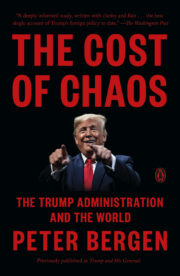Articles
Al-Qaeda and allied groups continue to pose a threat to the United States. Although it is less severe than the catastrophic proportions of a 9/11-like attack, the threat today is more complex and more diverse than at any time over the past nine years. Al-Qaeda or its allies continue to have the capacity to kill dozens, or even hundreds, of Americans in a single attack. A key shift in the past couple of years is the increasingly prominent role in planning and operations that U.S. citizens and residents have played in the leadership of al-Qaeda and aligned groups, and the higher numbers of Americans attaching themselves to these groups. Another development is the increasing diversification of the types of U.S.-based jihadist militants, and the groups with which those militants have affiliated. Indeed, these jihadists do not fit any particular ethnic, economic, educational, or social profile.
My testimony will consider four broad questions: A. What kind of the threat does al-Qaeda and its allies now pose to the United States? B. Who are the American recruits to these groups over the past couple of years? C. What kinds of targets are these groups likely to attack in the future, and what kinds of new tactics might they use? D. What factors are helping or hindering these group
In late January, Osama bin Laden released an audiotape praising the Nigerian who tried to blow up a Detroit-bound airliner on Christmas Day 2009. “The message delivered to you through the plane of the heroic warrior Umar Farouk Abdulmutallab was a confirmation of the previous messages sent by the heroes of [September] 11th,” he said.
Editor’s note: Peter Bergen, CNN’s national security analyst, is a fellow at the New America Foundation, a Washington-based think tank that promotes innovative thought from across the ideological spectrum, and at New York University’s Center on Law and Security. He’s the author of “The Osama bin Laden I Know: An Oral History of al Qaeda’s Leader.”
One truism of counterinsurgency is that securing and winning over the population are the keys to success. So, what do the people of Afghanistan want? In December, ABC and the BBC conducted nationwide polling and discovered that one-third of Afghans said that poverty and unemployment were the biggest challenges confronting them. Another third named rising insecurity and violence. Meanwhile, relatively few Afghans were preoccupied by those issues that many Americans deem to be Afghanistan’s greatest problems. Only 14 percent of respondents said corruption and feckless government were the leading concerns, while a mere 2 percent selected the drug trade and the influence of foreigners. When asked to name the biggest danger in the country, around 70 percent of respondents chose the Taliban. The lesson flowing from all of this is that the United States must provide the kind of stability and prosperity that it promised Afghans after the overthrow of the Taliban
Editor’s note: Peter Bergen, CNN’s national security analyst, is a fellow at the New America Foundation, a Washington-based think tank that promotes innovative thought from across the ideological spectrum, and at New York University’s Center on Law and Security. He’s the author of “The Osama bin Laden I Know: An Oral History of al Qaeda’s Leader.”
Editor’s note: Peter Bergen, CNN’s national security analyst, is a fellow at the New America Foundation, a Washington-based think tank that promotes innovative thought from across the ideological spectrum, and at New York University’s Center on Law and Security. He’s the author of “The Osama bin Laden I Know: An Oral History of al Qaeda’s Leader.” Katherine Tiedemann is a policy analyst at the New America Foundation. They edit the AfPak Channel on ForeignPolicy.com.
Executive Director, Middle East Policy Council, and associate editor of Middle East Policy; author, Global Security Watch – Iran: A Reference Handbook Today, we’re here to discuss Afghanistan. […] he’s been providing consulting services to corporations on Middle Eastern issues. What we do know is that this al-Qaeda core has successfully embedded itself in what I call a syndicate of terrorist organizations in Pakistan – the old Afghan Taliban, the new Pakistan Taliban, groups like Lashkar-e-Taiba, and Jaish-e-Mohammed.\n Have we made substantial progress, in terms of the creation of structures, to prevent these kinds of incidents and in the restructuring after 9/11? SAGEMAN:
Like a snake backed into a corner, however, a weakened al Qaeda isn’t necessarily less dangerous. In the first comprehensive look of its kind, Foreign Policy offers the Almanac of Al Qaeda, a detailed accounting of how al Qaeda’s ranks, methods, and strategy have changed over the last decade and how they might evolve from here. What emerges is a picture of a terrorist vanguard that is losing the war of ideas in the Islamic world, even as its violent attacks have grown in frequency.
THE highly classified C.I.A. program to kill militants in the tribal regions of Pakistan with missiles fired from drones is the world’s worst-kept secret.
The United States has long tried to maintain plausible deniability that it is behind drone warfare in Pakistan, a country that pollsters consistently find is one of the most anti-American in the world. For reasons of its own, the Pakistani government has also sought to hide the fact that it secretly agreed to allow the United States to fly some drones out of a base in Pakistan and attack militants on its territory.
FEATURED BOOK

 Previous
Previous
